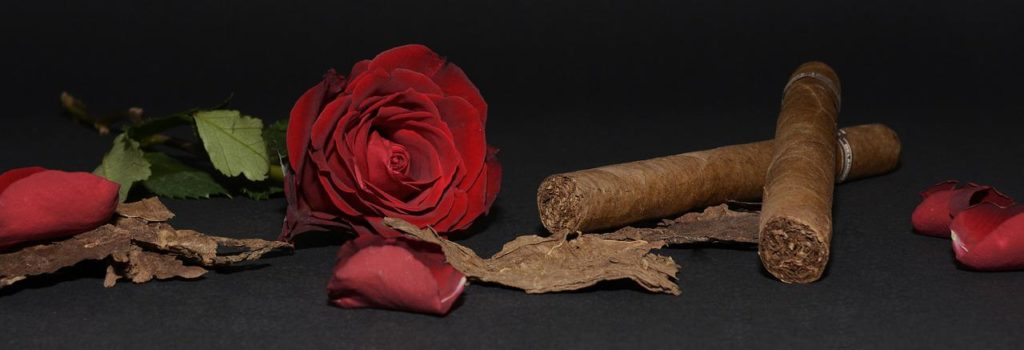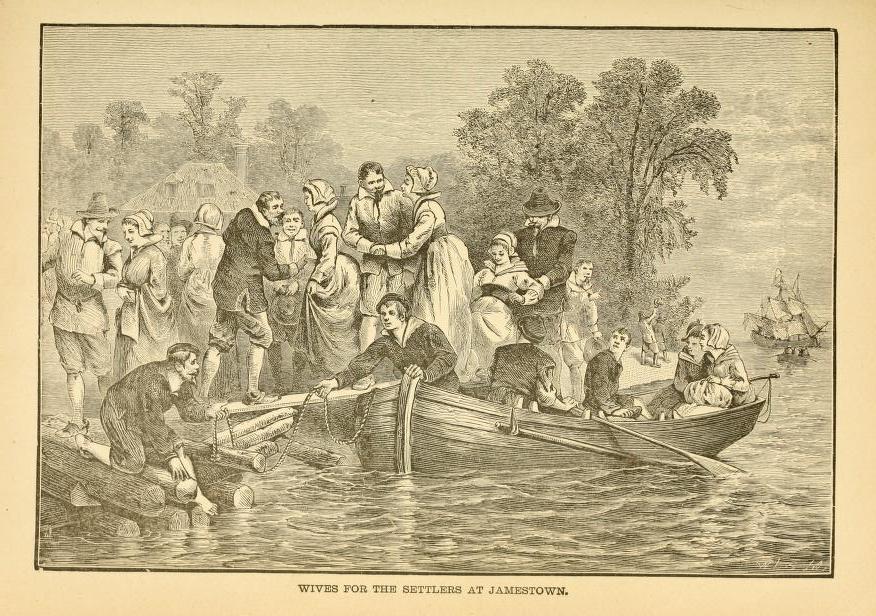
Tobacco Brides: Slavery, Indentureship, or Empowerment
Free clothes, linens, and household goods, and a 50-acre plot of land that will stay yours even after you marry. That’s what the ads said. The Virginia Company knew their market. In 17th century England, getting married wasn’t as simple as falling in love, and saying “Will you marry me? I will. And I do.” The average man and woman had to work years to earn enough money to equip a household before they could marry. For working-class women, that could mean servitude.
Then, in 1619 -1622, the Virginia Company offered a golden opportunity. Their colony, Jamestown, was in desperate need of women. The original settlers landed along the James River in 1607, with 105 passengers and 39 crew members, all male. Hundreds of colonists sailed the North Atlantic to Jamestown in the twelve years that followed and a few women had made the journey, but the colony was still almost all male.
The colony’s investors feared that the colony would shrivel into oblivion due to the lack of brides. Too many men came to the colony with plans of making their fortune and then traveling back to England to settle down. A few others found a wife among the Powhatans and forsook the settlement to adopt the lifestyle of the native peoples.
If Jamestown were to survive and thrive, the colony needed families. The problem was how to persuade women to make the four-month journey to a place riddled with disease and conflict, with a death rate of nearly fifty percent.
The company’s treasurer came up with a plan: Offer free passage, a dowry of household goods and other essentials, and free land, land that would not be swallowed up by coverture when the woman married.
Ninety women came over in 1620, and another 56 in 1621-1622. And these adventurers were free to choose the husband of their choice, preferably among the wealthy bachelors since the Virginia Company expected to be reimbursed for the expenses of the dowry goods, the passage, and the land, payment to be made in Tobacco leaves, thus the name Tobacco Brides. The amount due was 120 -150 pounds of tobacco leaves, the equivalent of approximately $5,000 in our dollars today. If the selected groom couldn’t afford such a hefty sum, he could make payments.
Perhaps it was not too unlike today’s Bachelorette Show, an eligible bachelorette being courted by an array of strangers vying for her affection and seeking to persuade her that they could be the best providers. Records show that many of the women married within three months of arrival.
Some have suggested that these women were “sold,” but that is not the case. They had the option to marry whom they chose, or to not marry and return across the stormy Atlantic to England. Becoming a Tobacco Bride offered women a possibility to marry, women who, otherwise, would have had to work years to save up enough to build a dowry or would have had difficulty attracting a husband. In addition, it provided land ownership independent of their husband, and much more liberal inheritance laws for women than in England.
Marrying for love was a luxury in the 17th Century. Being a Tobacco Bride offered an enhanced level of independence and the opportunity to select a husband from a stable of eligible bachelors: a winning combination for the bold, desperate, and/or adventurous.
[1] Coverture was a legal practice by which a woman’s legal identity was absorbed by her husband upon marrying.
Sources:
Little, Becky. “When the Jamestown Colony Placed Ads to Attract Brides.” History.com. 2 Jan. 2019. https://www.history.com/news/jamestown-colony-women-brides-program
Zug, Marcia. “The Mail Order Brides of Jamestown, Virginia.” The Atlantic. https://www.theatlantic.com/business/archive/2016/08/the-mail-order-brides-of-jamestown-virginia/498083/


8 thoughts on “Tobacco Brides: Slavery, Indentureship, or Empowerment”
Three years after we were married, my wife told me, the moment she first saw me, she had nudged my cousin. “I’m going to marry that guy.”
Love at first sight:) That’s cool! And I assume you didn’t cost her any tobacco leaves either.
An interesting bit of history here. THANK YOU! These women definitely had to have the spirit of adventure!!! They would definitely make an interesting book!!! Thanks for this, Sherry!! 🙂
Yes, great story potntial! Thank you for stopping by.
My goodness. What people had to go through in the past. Thank you, Sherry.
I’m thankful that today we have the freedom to marry for love.
Very interesting. This sounds like what happened in Mobile and New Orleans early in their history. They were originally French colonies and had a shortage of women though there were a few, wives of the colonists and servants, most of them from Canada. France sent several shiploads of girls to Mobile and New Orleans to find husbands. This was meant to discourage French alliances with Indian women. The girls in the first shipload were called Cassette Girls, who arrived in Mobile in 1728. Few of these girls, however, stayed in Mobile. Most of them moved on to New Orleans.
Wow, I never knew that. It’s very intriguing. It makes me want to research the Cassette Girl further. Thank you for sharing!
Comments are closed.